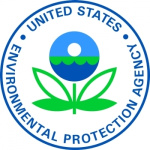- Industry: Government
- Number of terms: 11955
- Number of blossaries: 0
- Company Profile:
U.S. Environmental Protection Agency (EPA) is a federal agency responsible for the development and enforcement of regulations for human health and environment protection. The agency researches and sets standards for environmental programs and delegates. It was founded in 1970 following the proposal ...
Displacement of fresh or ground water by the advance of salt water due to its greater density, usually in coastal and estuarine areas.
Industry:Natural environment
Movements through the Earth system of key chemical constituents essential to life, such as carbon, nitrogen, oxygen, and phosphorus.
Industry:Natural environment
The Convention on Climate Change sets an overall framework for intergovernmental efforts to tackle the challenge posed by climate change. It recognizes that the climate system is a shared resource whose stability can be affected by industrial and other emissions of carbon dioxide and other greenhouse gases. The Convention enjoys near universal membership, with 189 countries having ratified.
Under the Convention, governments:
* gather and share information on greenhouse gas emissions, national policies and best practices
* launch national strategies for addressing greenhouse gas emissions and adapting to expected impacts, including the provision of financial and technological support to developing countries
* cooperate in preparing for adaptation to the impacts of climate change.
The Convention entered into force on 21 March 1994.
Industry:Natural environment
Powerful synthetic greenhouse gases such as hydrofluorocarbons, perfluorocarbons, and sulfur hexafluoride that are emitted from a variety of industrial processes. Fluorinated gases are sometimes used as substitutes for stratospheric ozone-depleting substances (e.g., chlorofluorocarbons, hydrochlorofluorocarbons, and halons) and are often used in coolants, foaming agents, fire extinguishers, solvents, pesticides, and aerosol propellants. These gases are emitted in small quantities compared to carbon dioxide (CO2), methane (CH4), or nitrous oxide (N2O), but because they are potent greenhouse gases, they are sometimes referred to as High Global Warming Potential gases (œHigh GWP gases).
Industry:Natural environment
Carbon-fluorine compounds that often contain other elements such as hydrogen, chlorine, or bromine. Common fluorocarbons include chlorofluorocarbons (CFCs), hydrochlorofluorocarbons (HCFCs), hydrofluorocarbons (HFCs), and perfluorocarbons (PFCs).
Industry:Natural environment
A family of man-made compounds that includes, but are not limited to, chlorofluorocarbons (CFCs), bromofluorocarbons (halons), methyl chloroform, carbon tetrachloride, methyl bromide, and hydrochlorofluorocarbons (HCFCs). These compounds have been shown to deplete stratospheric ozone, and therefore are typically referred to as ODSs.
Industry:Natural environment
A human intervention to reduce the human impact on the climate system; it includes strategies to reduce greenhouse gas sources and emissions and enhancing greenhouse gas sinks.
Industry:Natural environment
Infrared radiation consists of light whose wavelength is longer than the red color in the visible part of the spectrum, but shorter than microwave radiation. Infrared radiation can be perceived as heat. The Earths surface, the atmosphere, and clouds all emit infrared radiation, which is also known as terrestrial or long-wave radiation. In contrast, solar radiation is mainly short-wave radiation because of the temperature of the Sun.
Industry:Natural environment
The ability of a surface material to reflect sunlight including the visible, infrared, and ultraviolet wavelengths.
Industry:Natural environment
A general term for organic materials formed from decayed plants and animals that have been converted to crude oil, coal, natural gas, or heavy oils by exposure to heat and pressure in the earth's crust over hundreds of millions of years.
Industry:Natural environment
